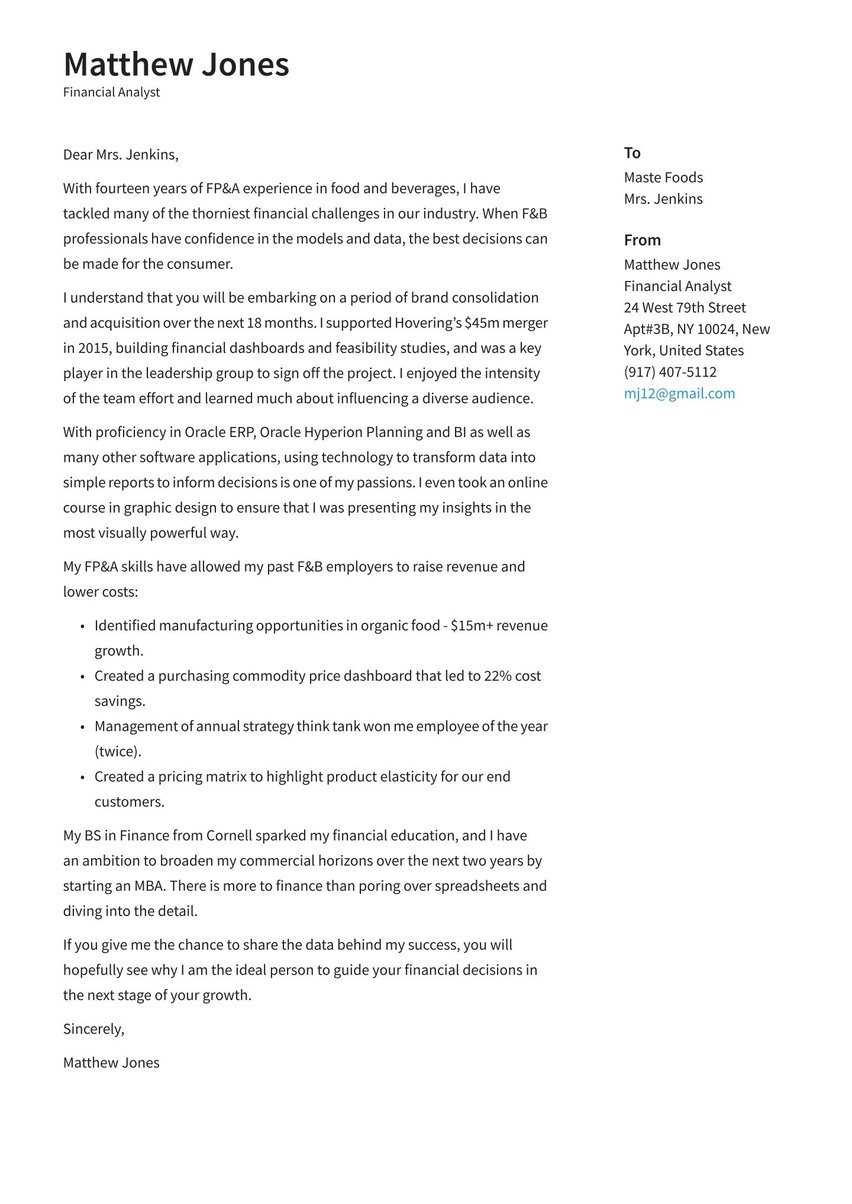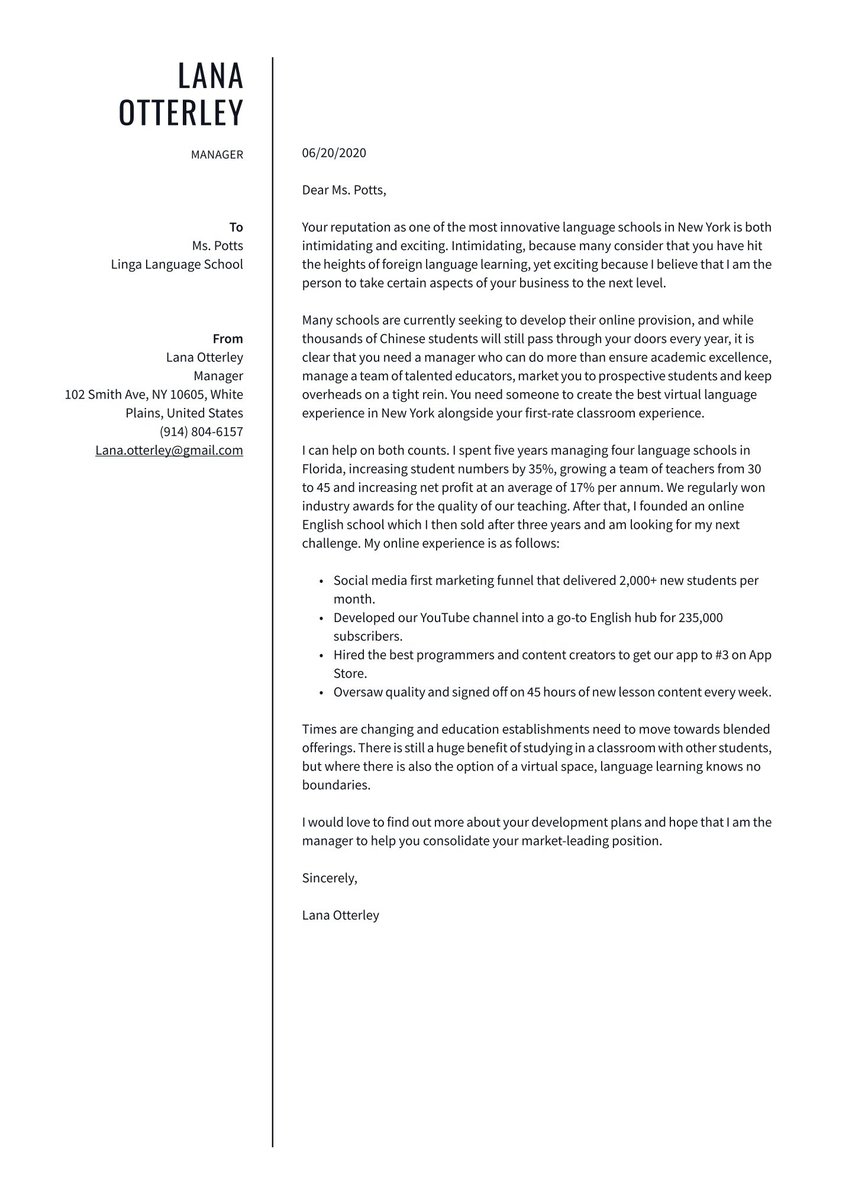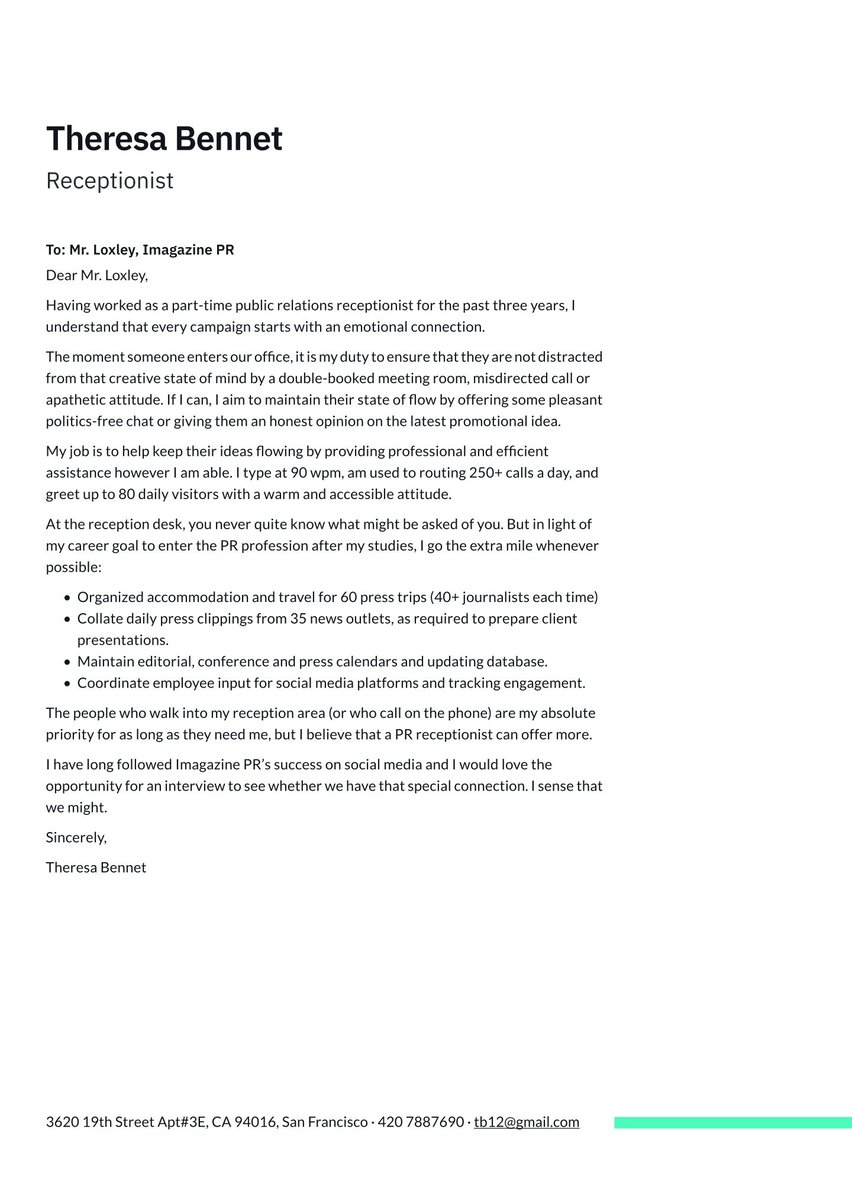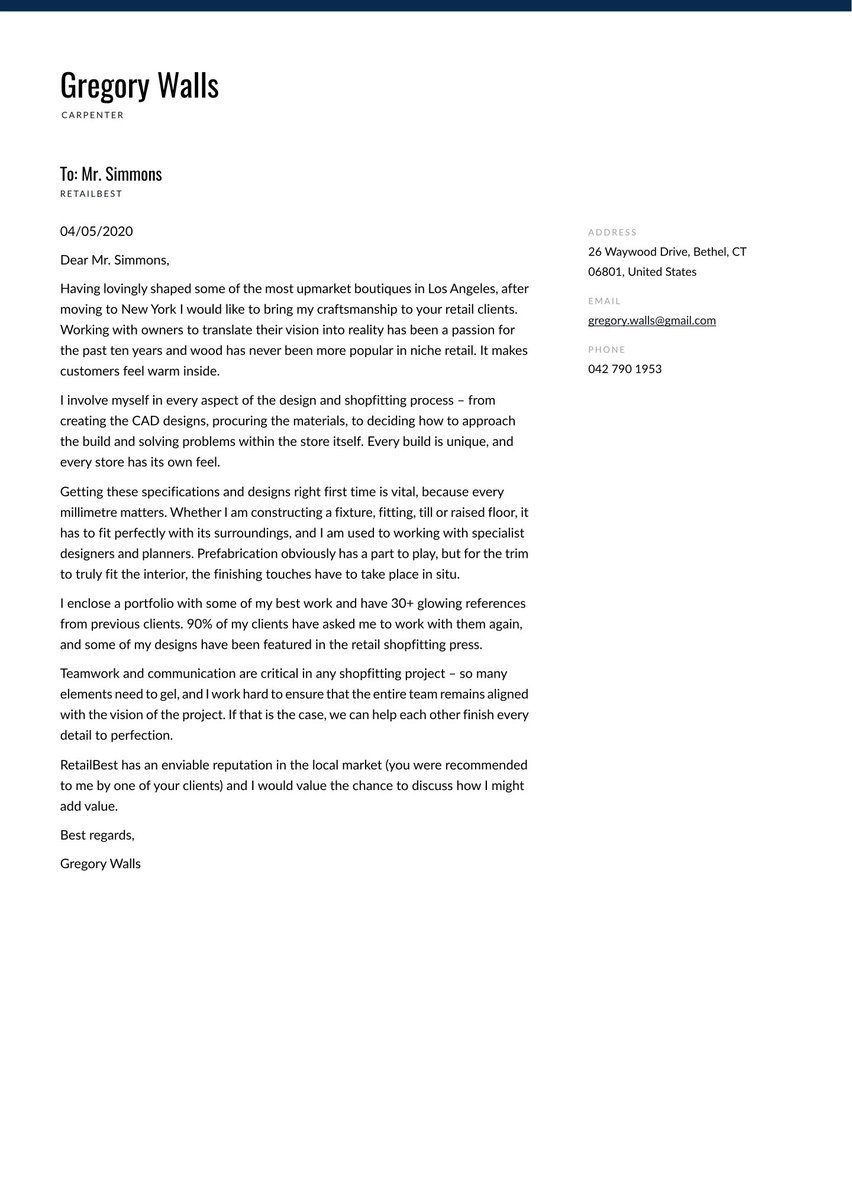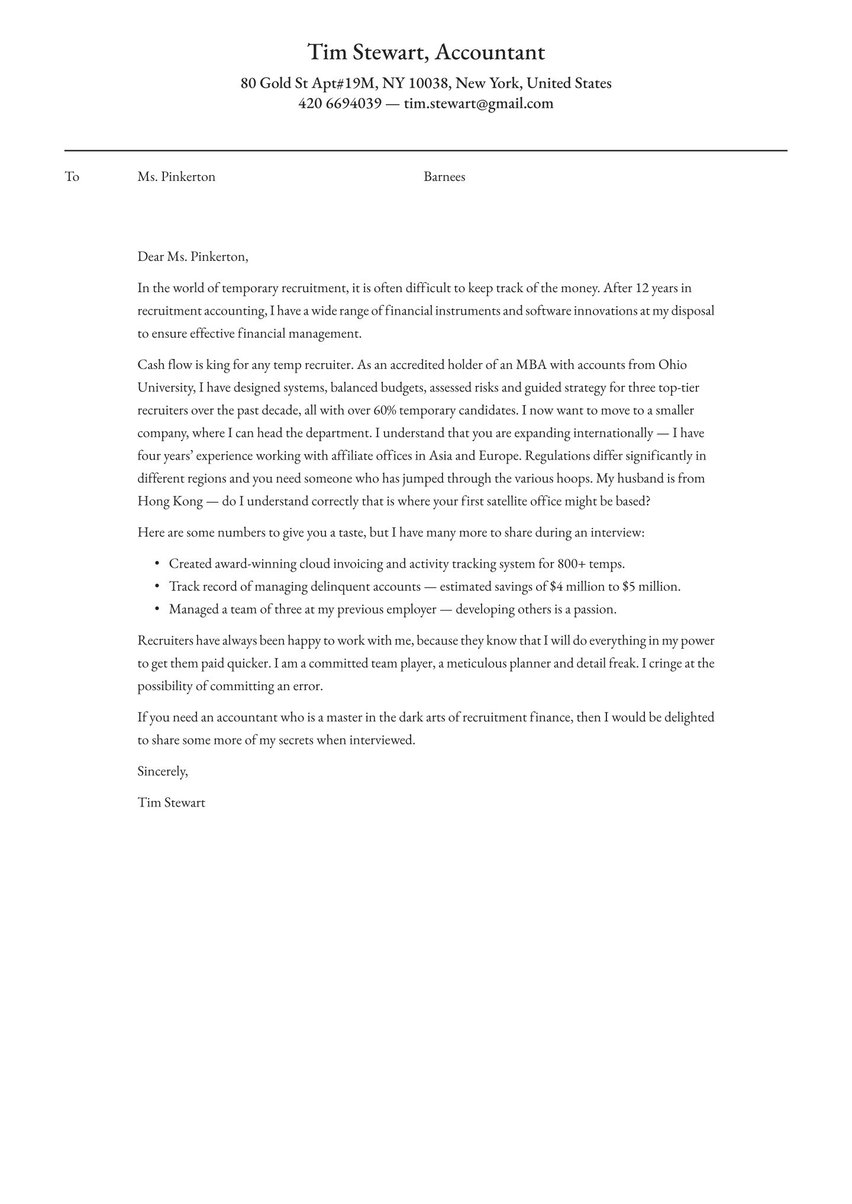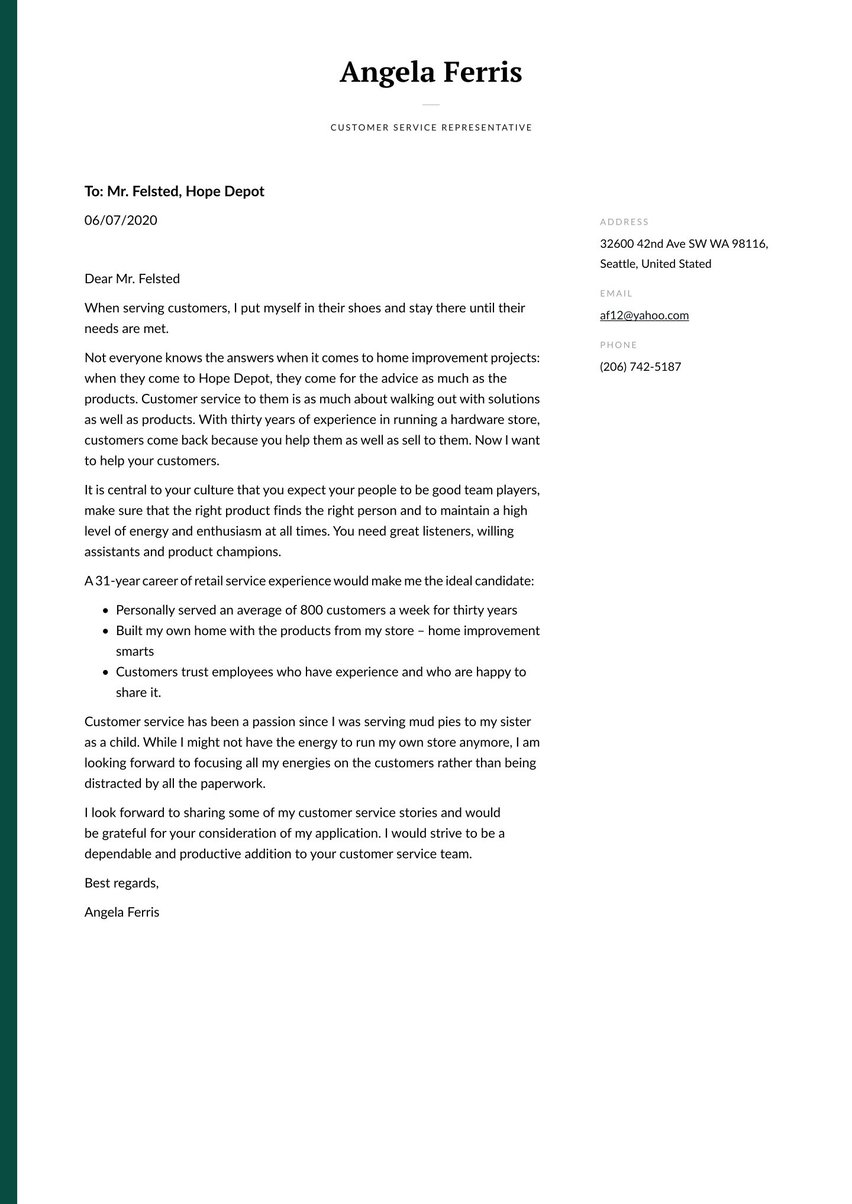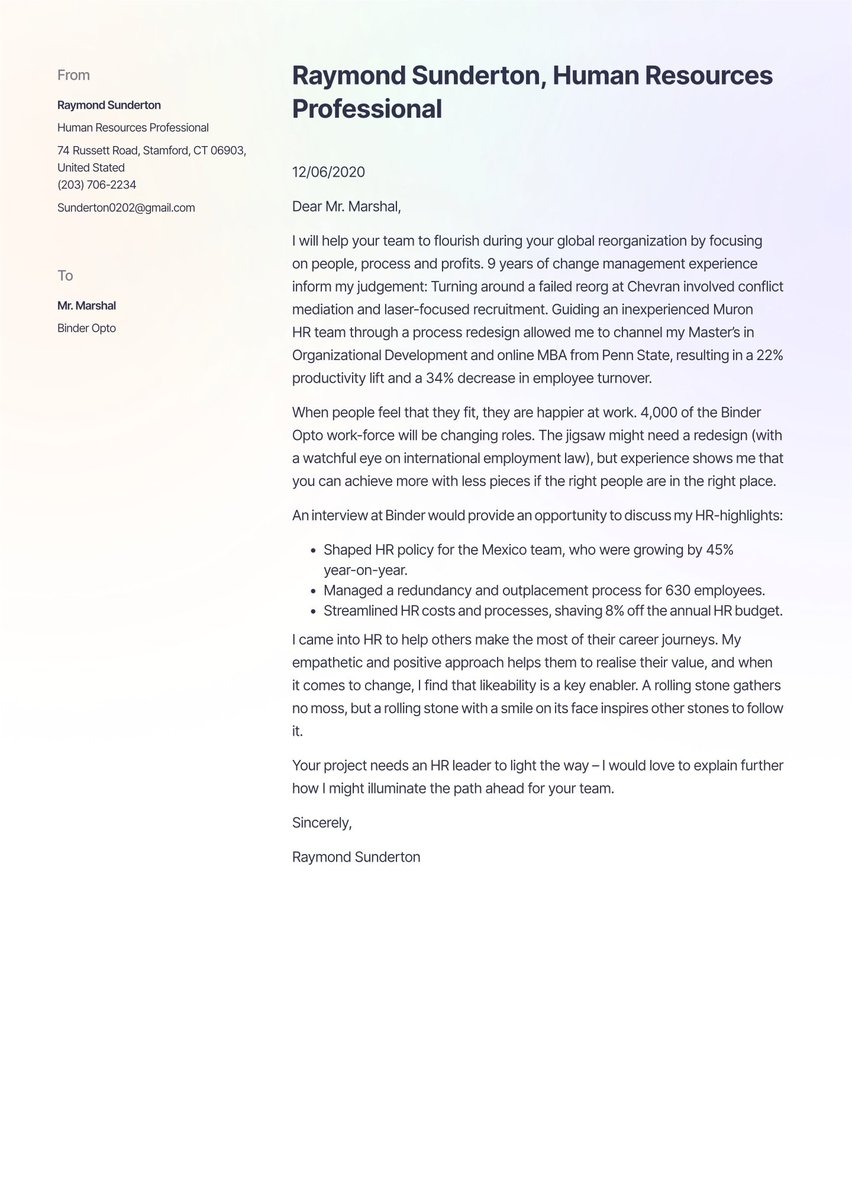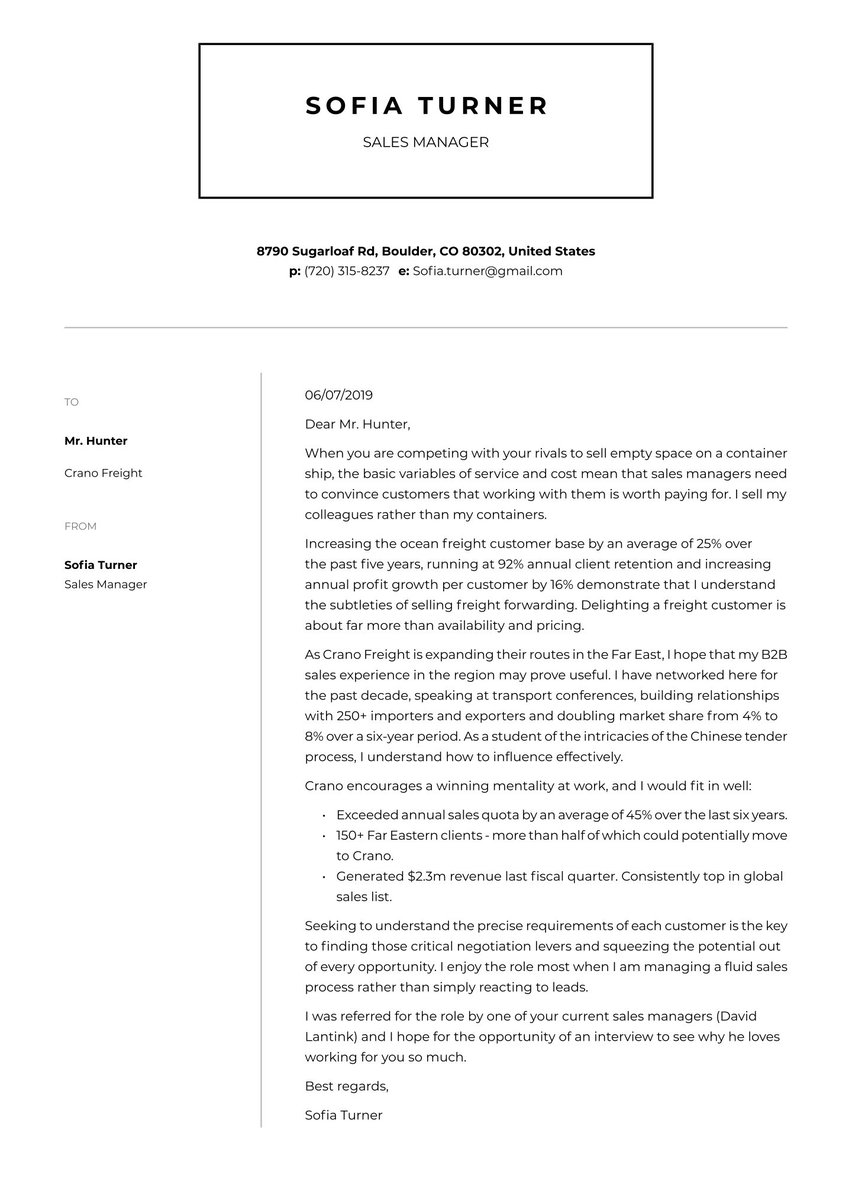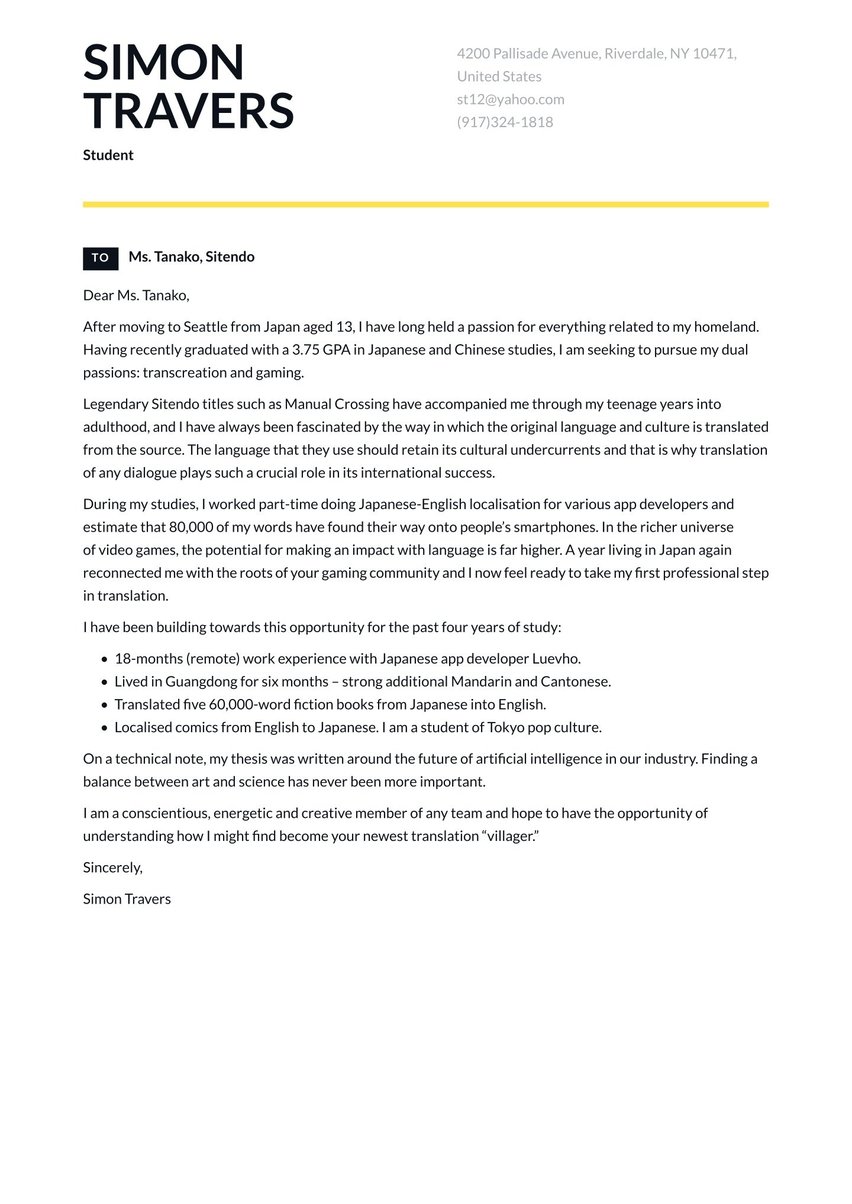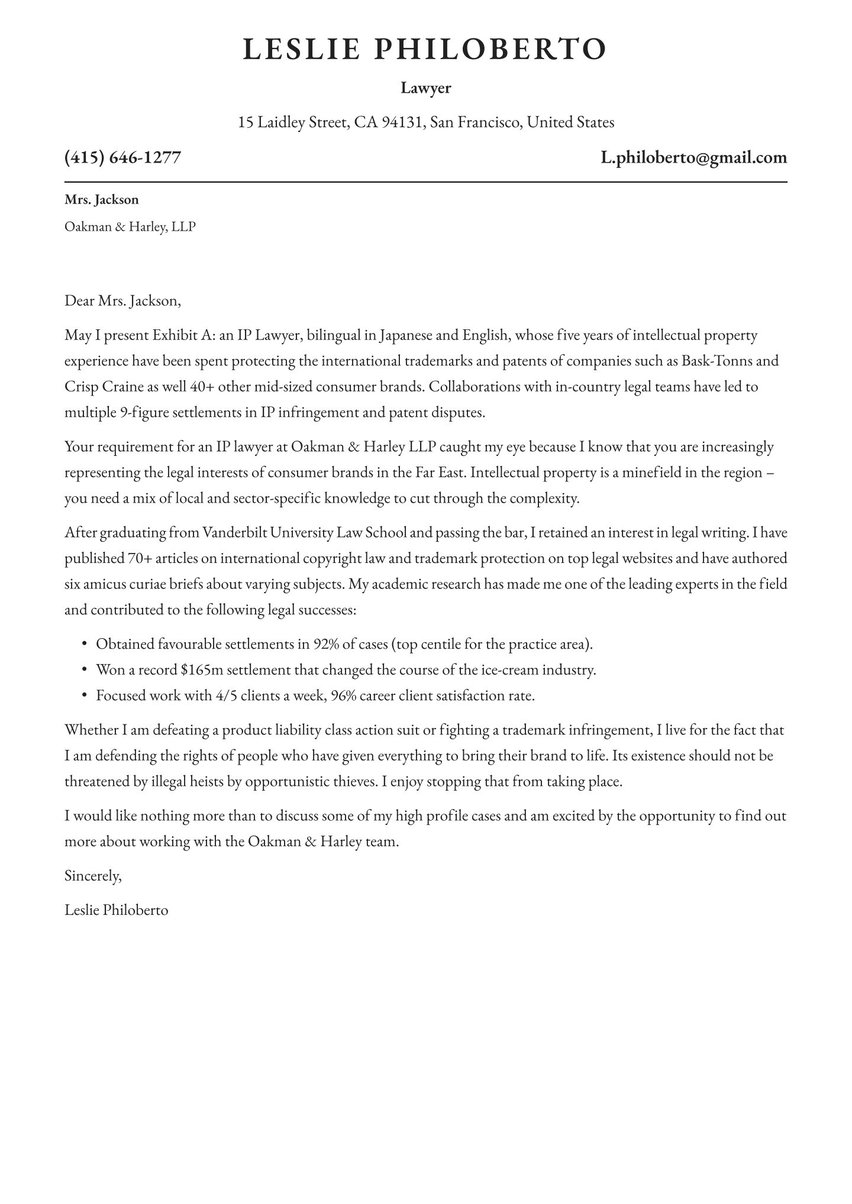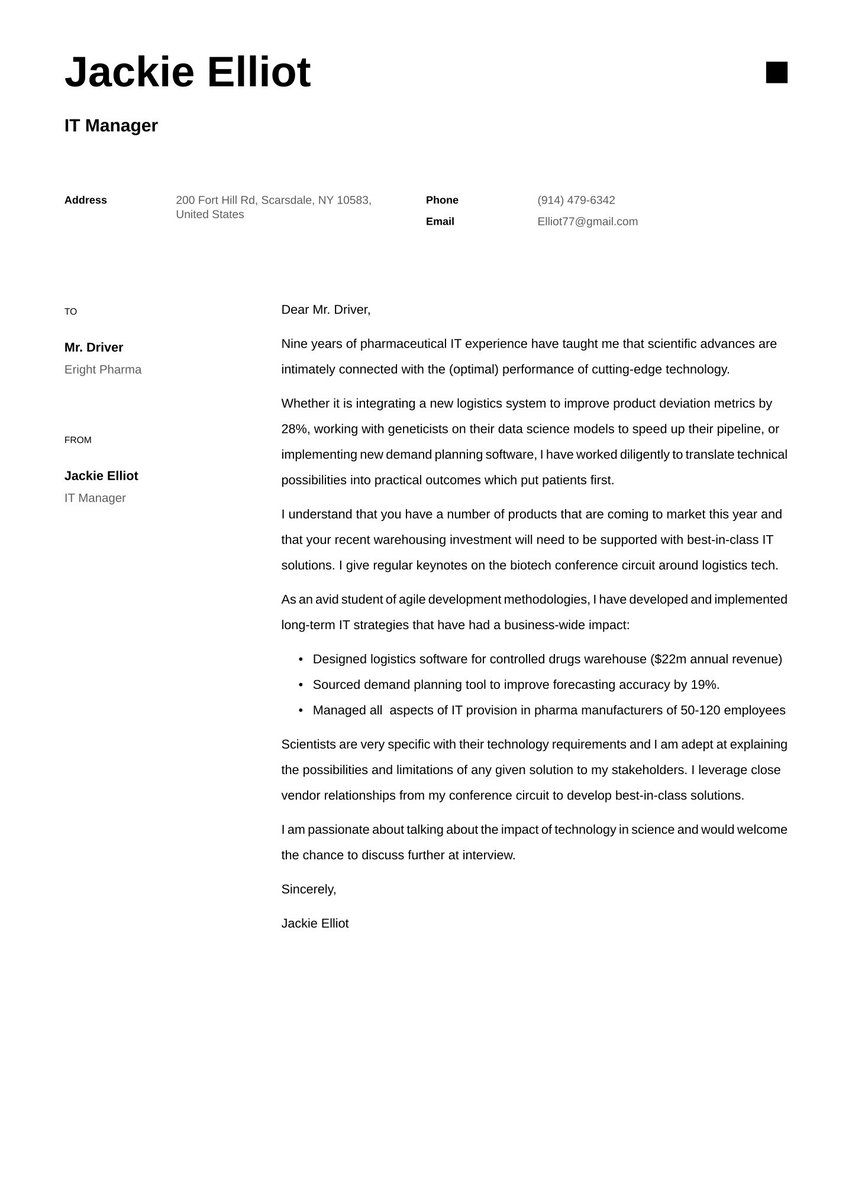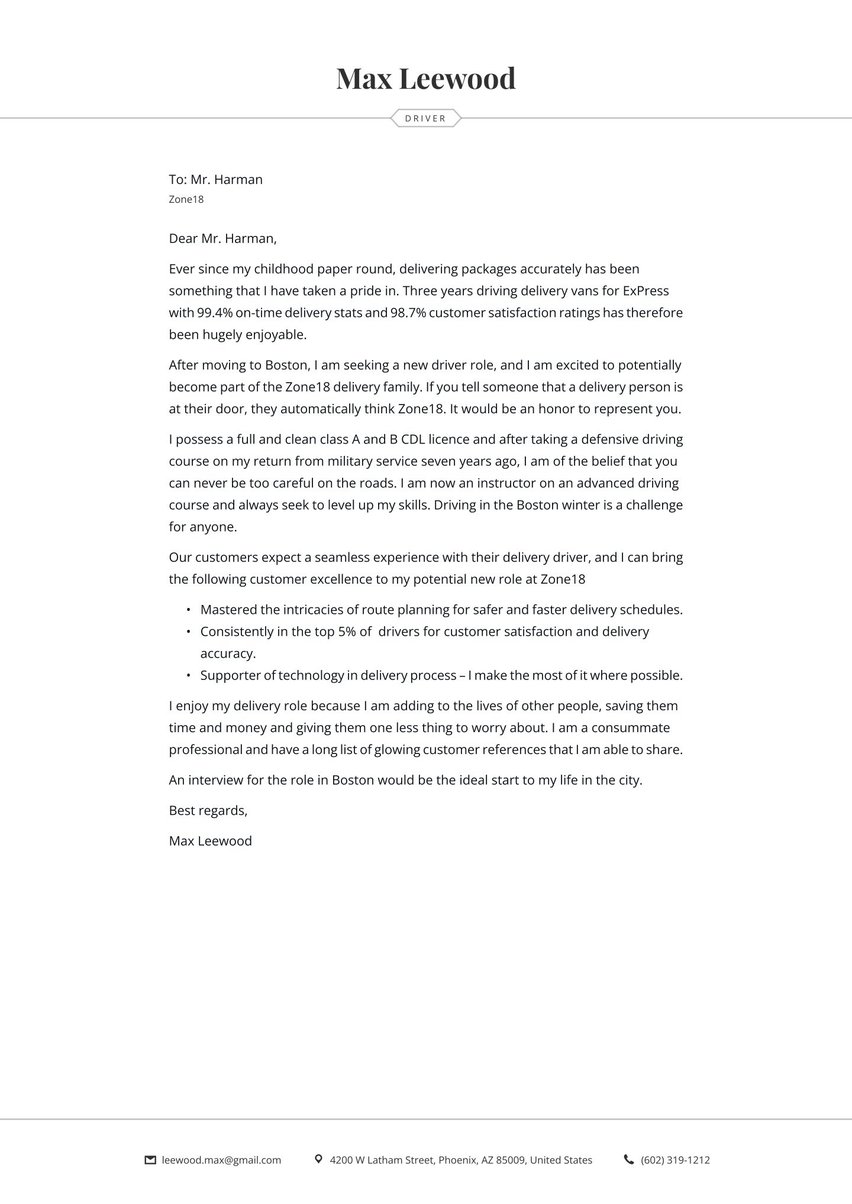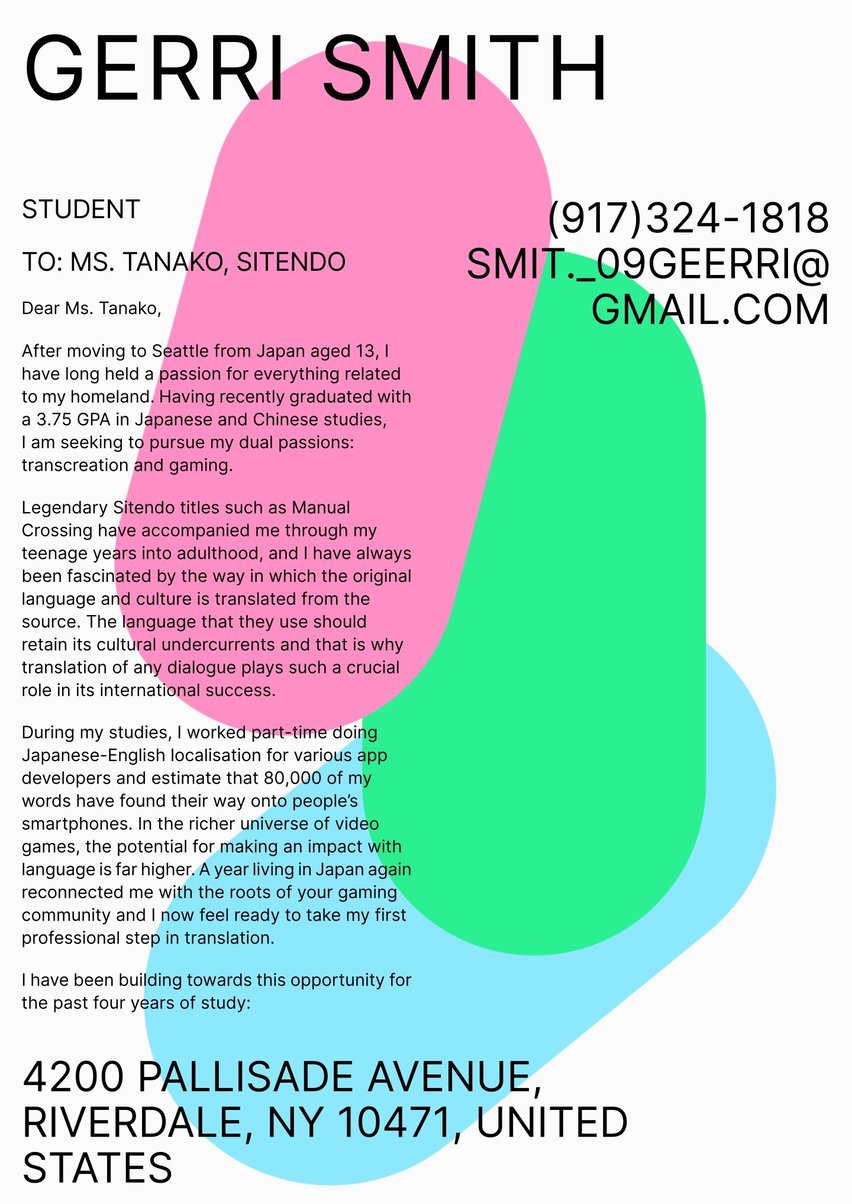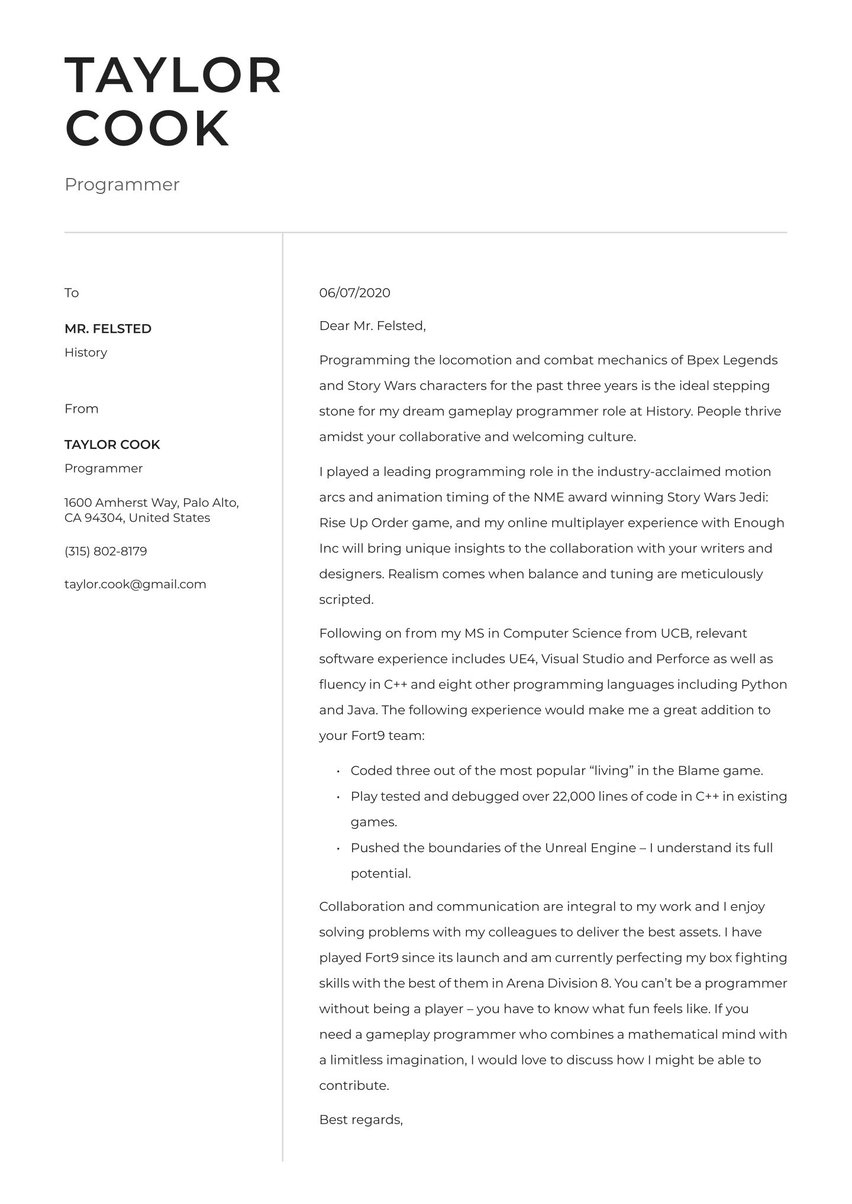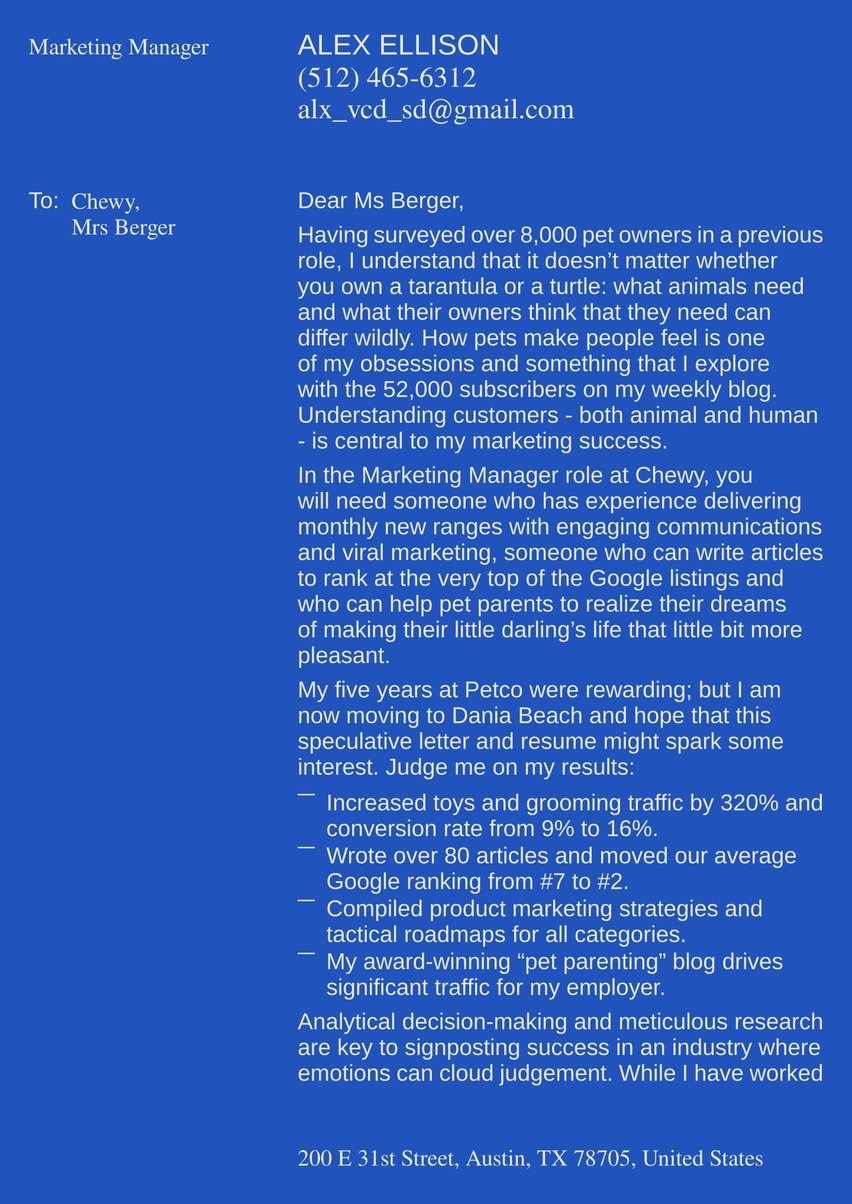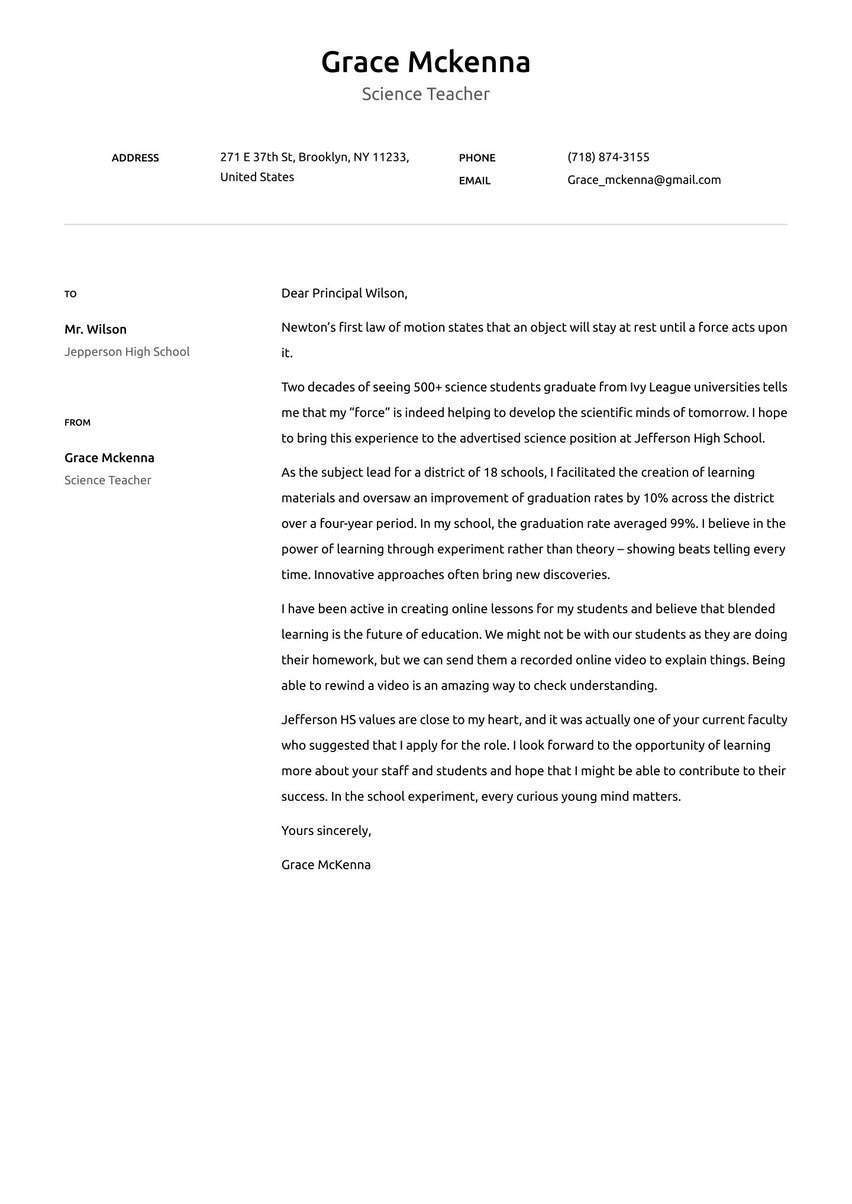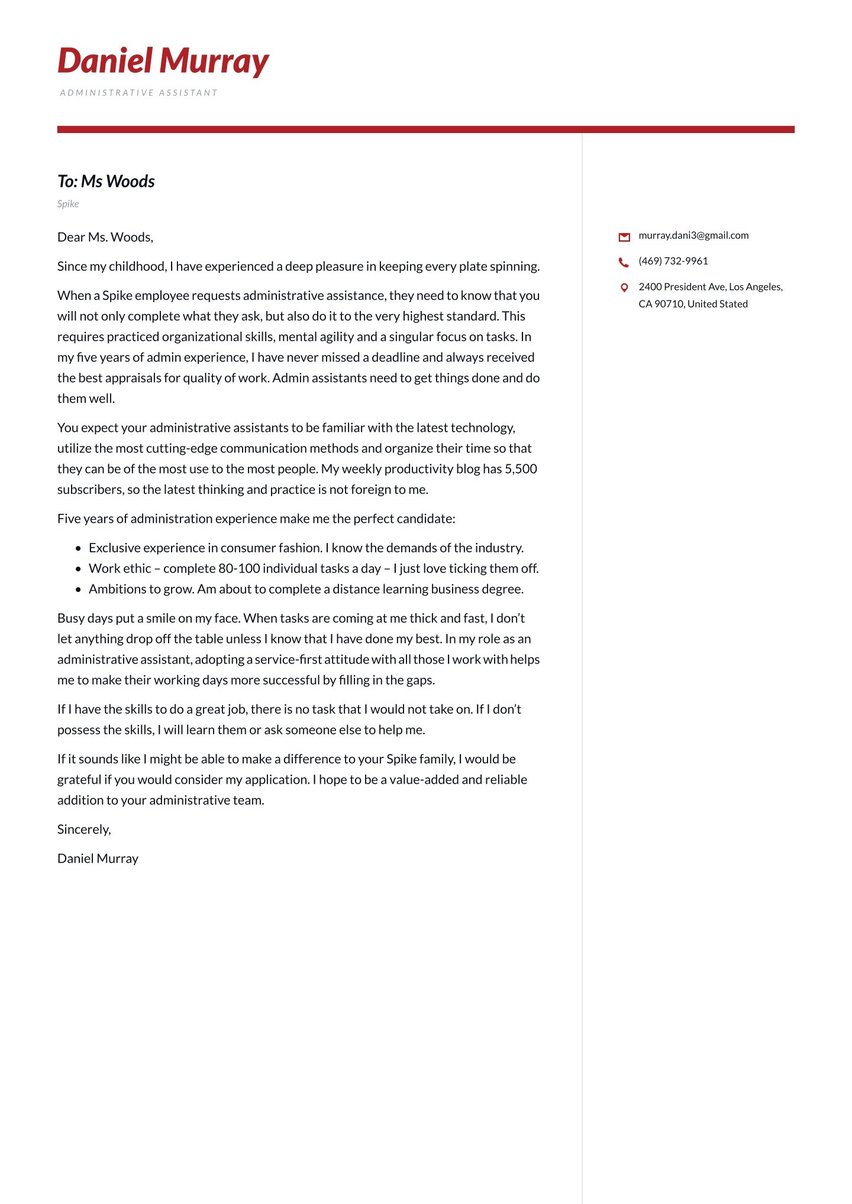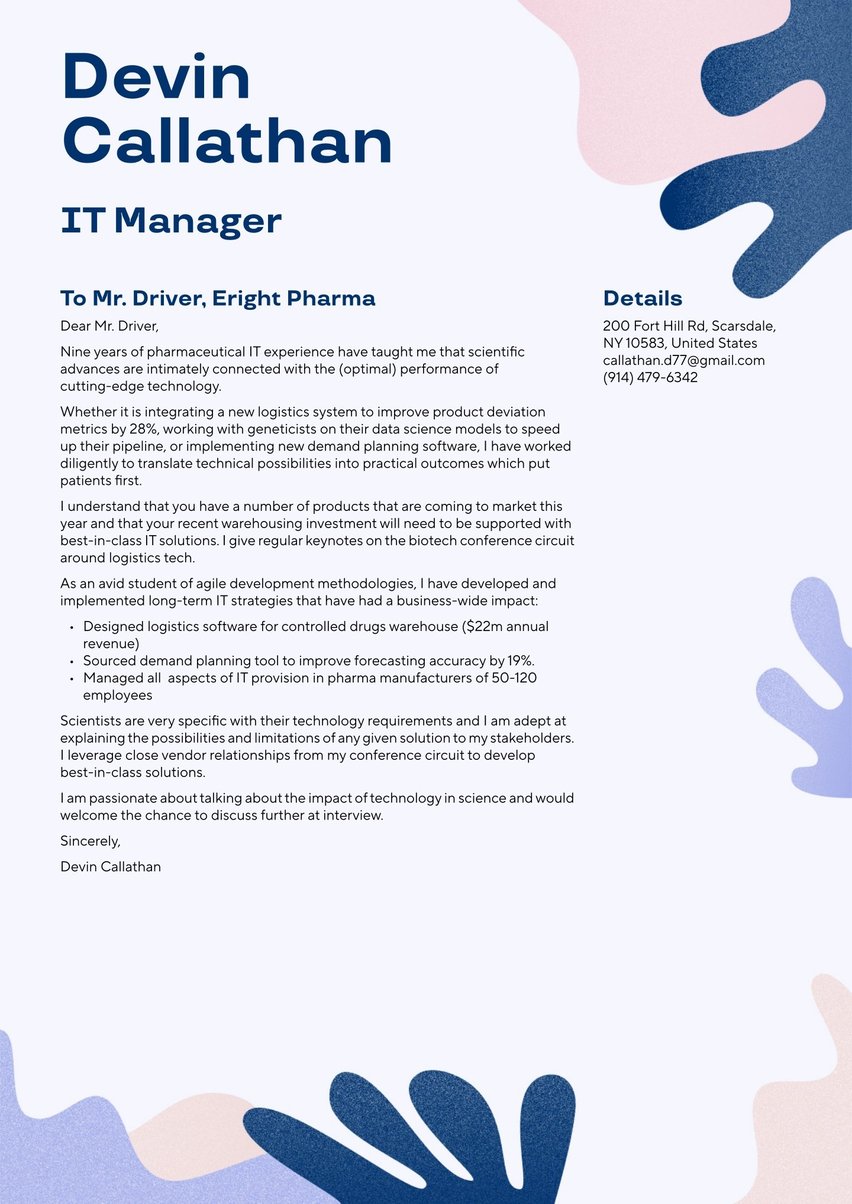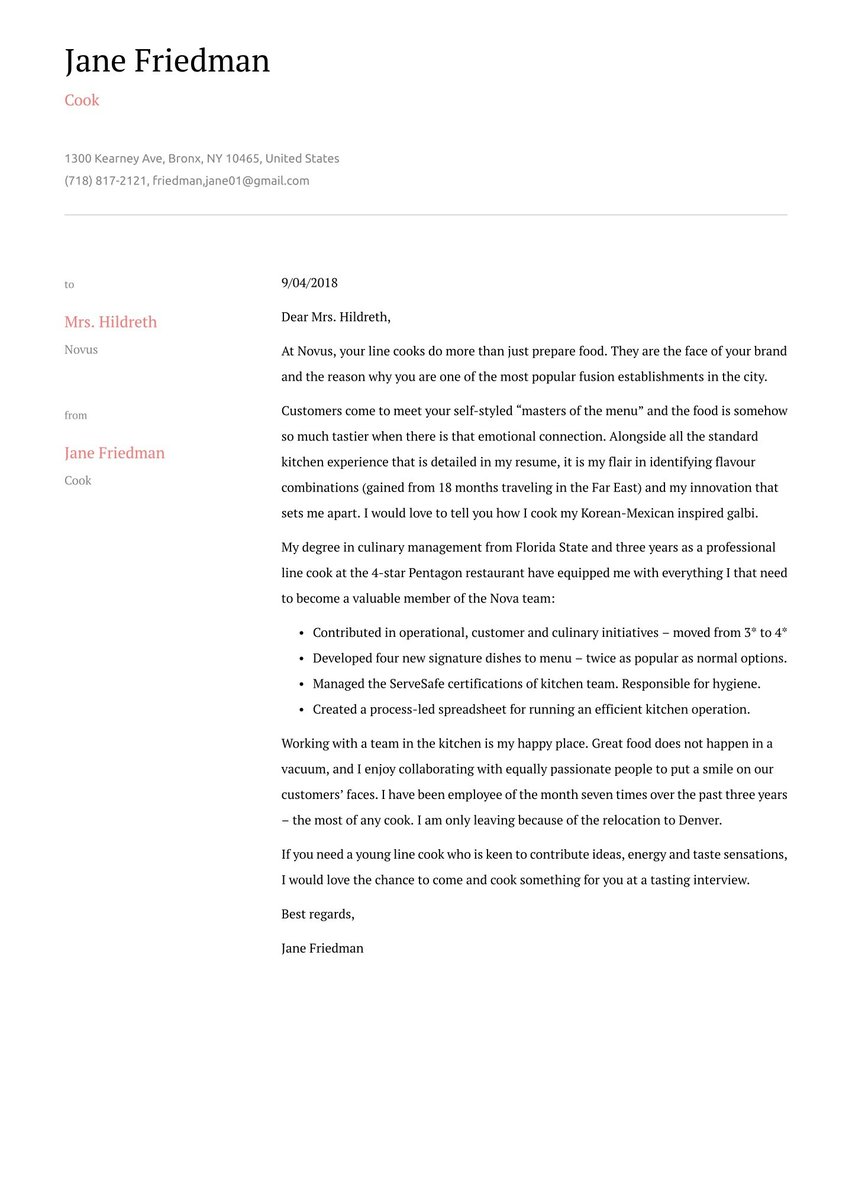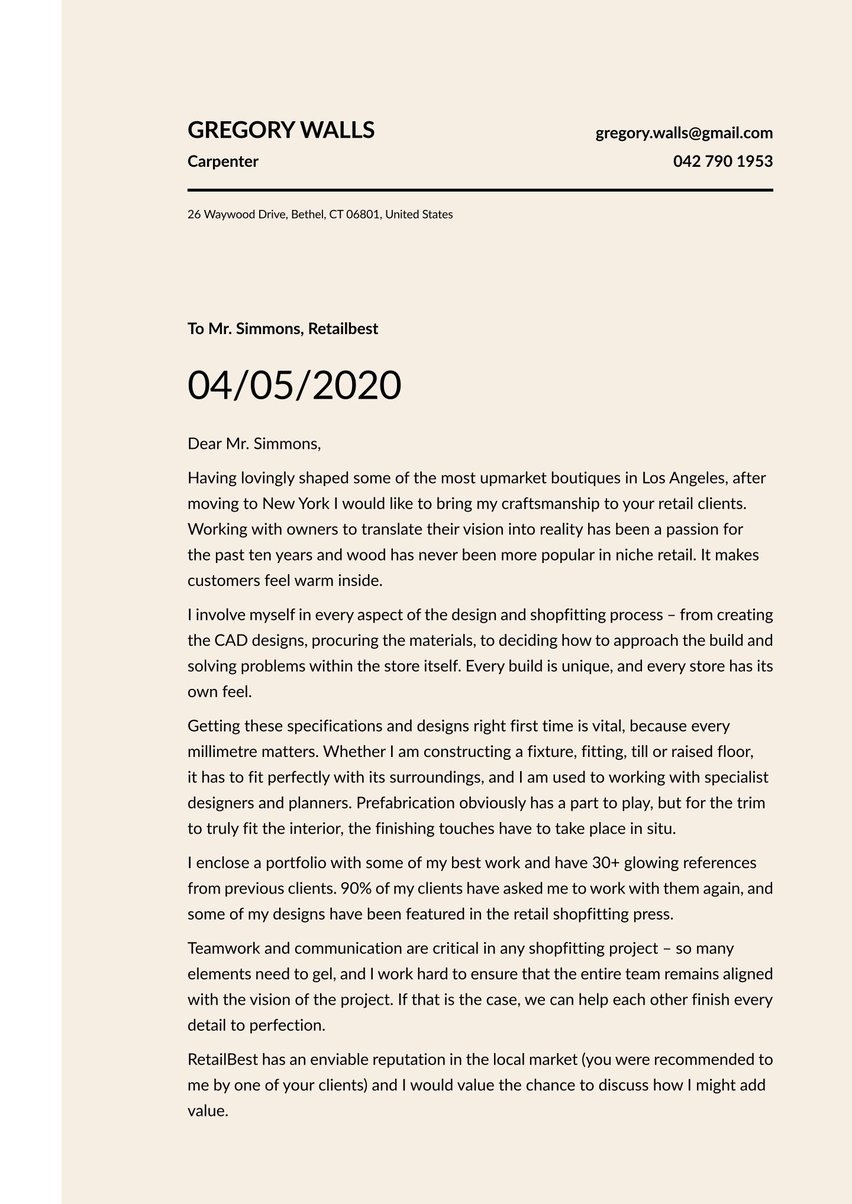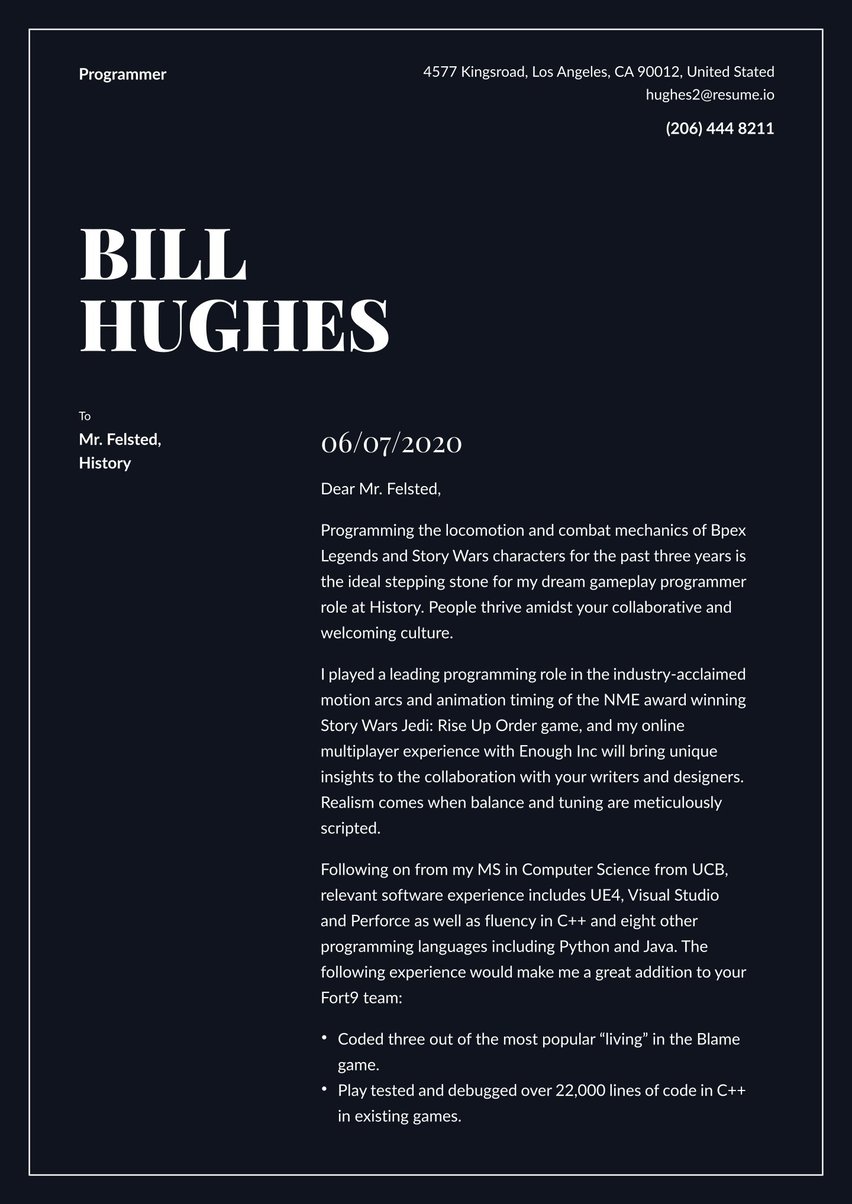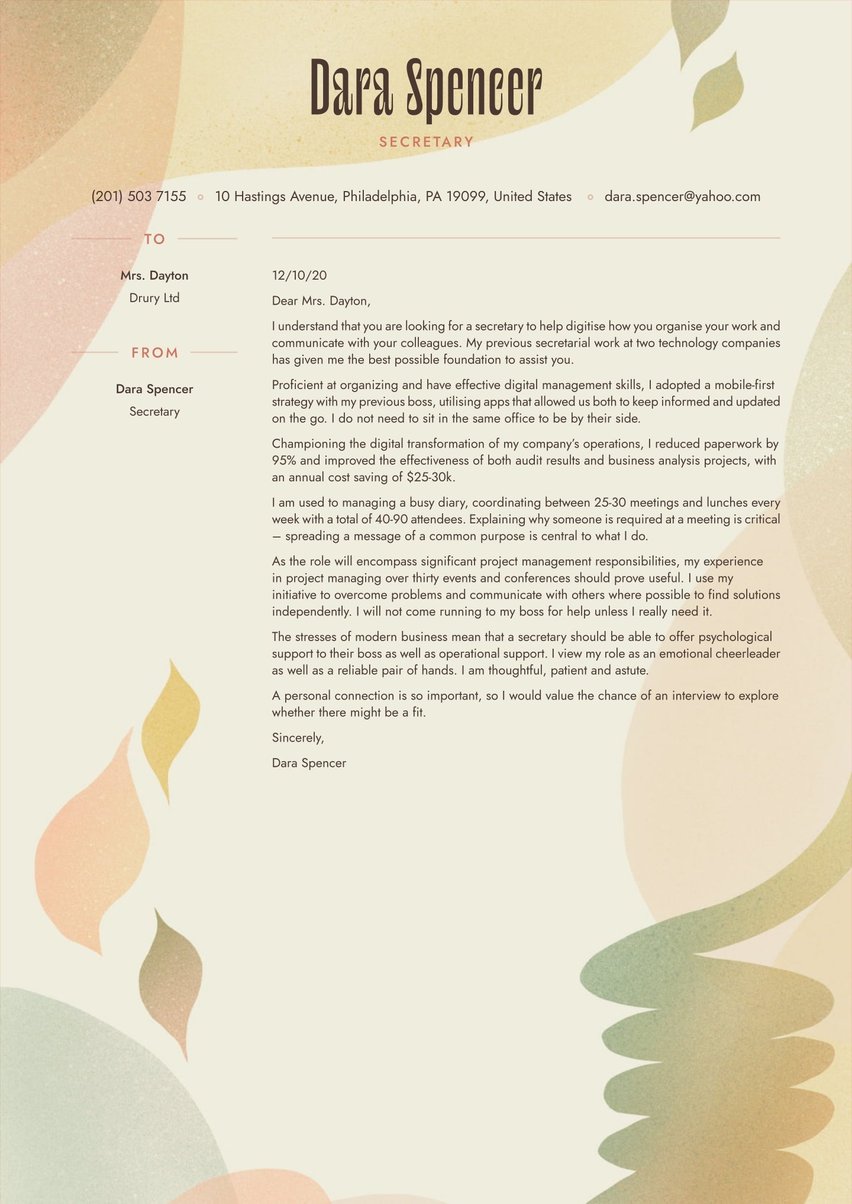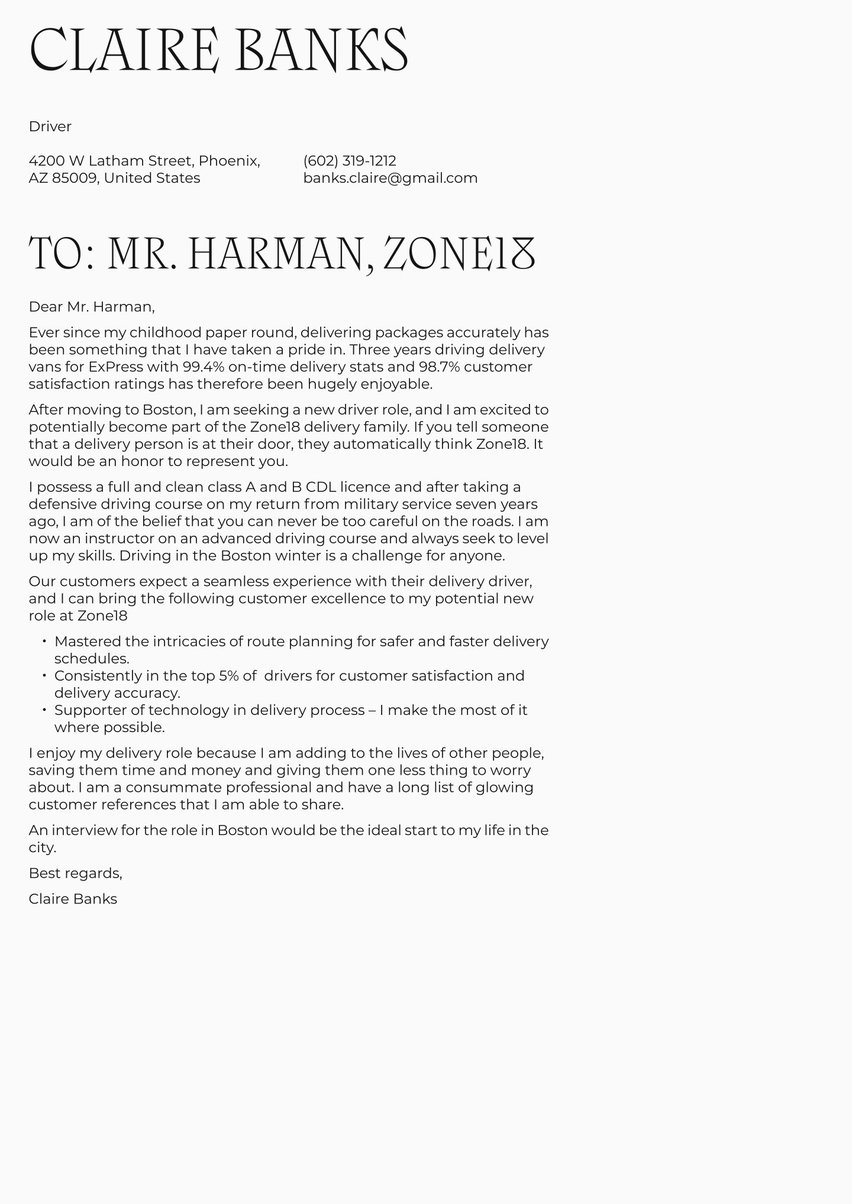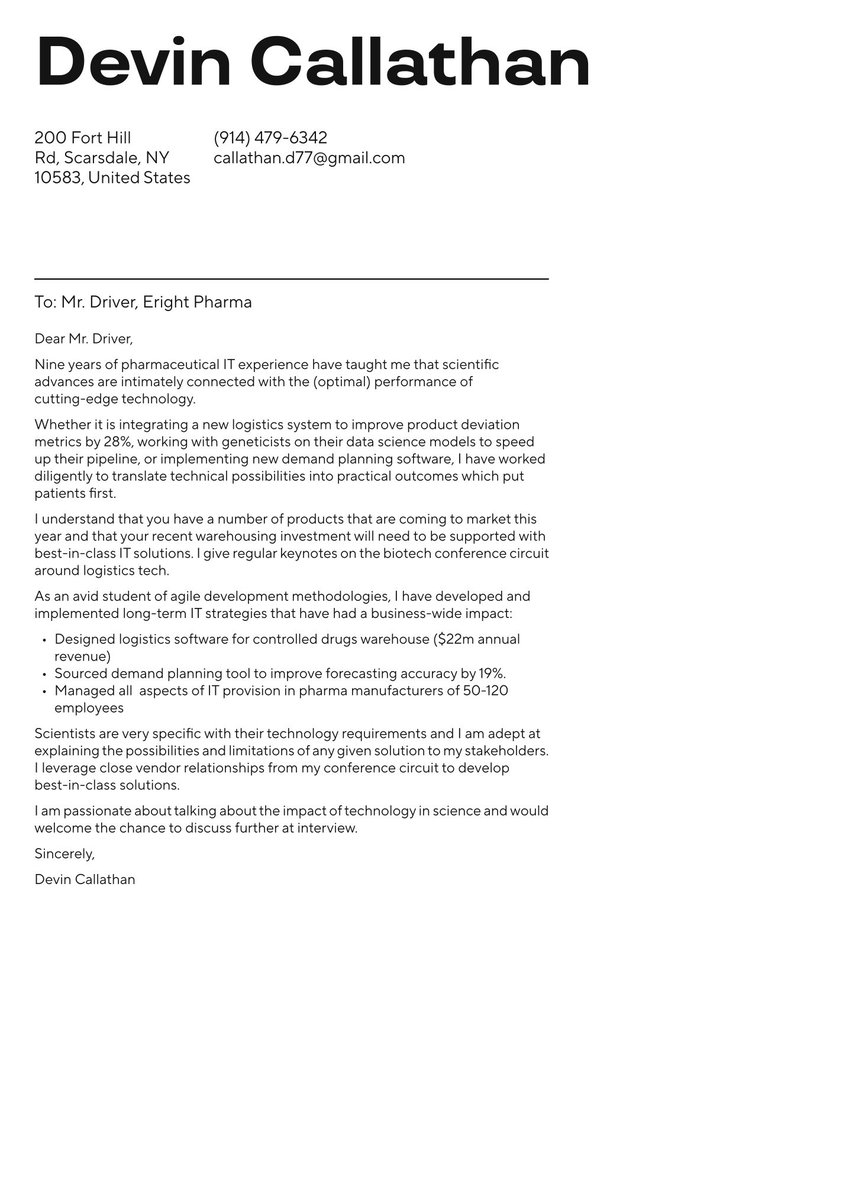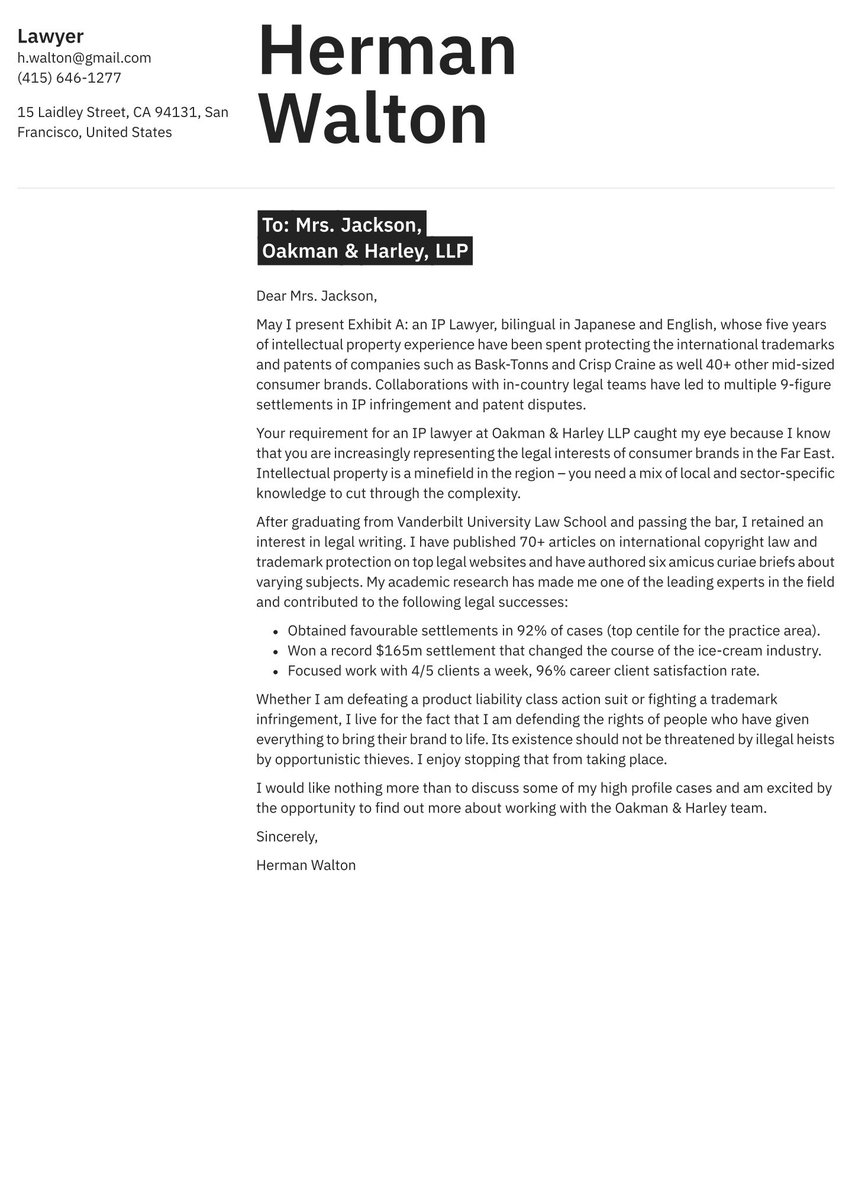Taxes are an absolute minefield to understand. To illustrate what we all know to be true, 90% of Americans don’t even know how many tax brackets there are.
Yes, navigating the ever-changing landscape of the tax system feels impossible to the vast majority of us. So, if you’re in the privileged position of holding the secret map, you’re one step ahead of the rest of us. But can your financial insights land you your next job?
If you’re searching for a new role, your tax accountant cover letter needs to be on point. As the most freeform part of your application, this letter gives the hiring manager a preview of what they can expect from you. For that reason, you should choose your words wisely.
Here at Resume.io, we have everything you need to support your job search, including 180+ cover letter examples and writing guides. In the following writing guide, and corresponding tax accountant cover letter sample, we will look at:
- How to choose the best format for your tax accountant cover letter
- What to include in each paragraph of your cover letter
- The approach and tone you need to adopt when writing
- How to hook the reader’s attention (and hold onto it)
- Advice on writing a cover letter even if you have no experience
Looking for some additional inspiration? Take a look at our related cover letter examples below:
- Finance cover letter sample
- Banking cover letter sample
- Administration cover letter sample
- Bookkeeper cover letter sample
- Finance Assistant cover letter sample
- Finance Manager cover letter sample
- Bank Teller cover letter sample
- Auditor cover letter sample
- Private Equity cover letter sample
- Accounting and finance cover letter sample
- Bank Manager cover letter sample
- Loan Processor cover letter sample
- Accounting Internship cover letter sample
- Financial Advisor cover letter sample
- CFO cover letter sample
Best format for a tax accountant cover letter
Not sure where to start with your tax accountant cover letter? Don’t make the mistake of simply starting to write and hoping for the best. Instead, you need to make sure you have a format in place. When you write a cover letter, it should include the following elements:
- The cover letter header
- The greeting/salutation
- The cover letter intro
- The middle paragraphs (body of the letter)
- The ending paragraph of your cover letter (conclusion and call-to-action)
As you start to create your cover letter, you need to work through each of these elements—one step at a time. Taking this approach will help you to stay on track and stop you from rambling without a clear message. Hiring managers are familiar with the above structure and, as such, following it means they won’t get any unwelcome surprises along the way.
If you’re new to working on applications, we have just what you need. Check out our comprehensive cover letter guide for details on how you can perfect the structure. You will also find advice on how you can maximize the effect of the paragraphs you include.
Should you need more inspiration, you can take a look at our expertly-written tax accountant cover letter here:
Dear Mrs North,
I am writing to express my interest in the Tax Accountant role at Larwith. With a strong background in global taxation, I am confident in my ability to contribute to your financial governance during a tough economic time for the industry.
After graduating with a bachelor’s degree in accounting from Penn State and having passed my CPA qualification, my experience in the aviation and transport industries will bring a unique perspective to Larwith. The following accomplishments demonstrate the sorts of things that I hope to achieve should I join you.
- Identified tax discrepancies amounting to over $500,000 in potential penalties.
- Streamlined tax procedures, reducing end-of-year processing times by 25%.
- Collaborated on an inter-departmental project on innovative tax software solutions.
In terms of my aviation-specific experience, I have orchestrated a comprehensive tax strategy for a multinational airline, helping them navigate through intricate international tax treaties and securing potential annual tax savings in excess of $3 million. I know that this experience will prove useful as you target global expansion in the coming years.
I pride myself on staying current with the ever-evolving tax landscape, frequently attending seminars and workshops to ensure my taxation knowledge remains updated. This, coupled with my analytical acumen, positions me well to tackle the myriad of challenges that the aviation industry faces, from rapidly changing regulatory landscapes to fluctuating fuel costs.
I look forward to the opportunity of an interview to discuss further. I have met with several of your team at industry conferences and I am always impressed by their professionalism and driven attitude. I know that I would enjoy working with them.
Sincerely,
Richard Tramell
Cover letter header
First, let’s talk about the cover letter header. This is located at the top of the document and includes your basic information: your name, location, and contact details. You don’t want there to be any barriers when it comes to the hiring manager reaching you. Make sure that this information is easy to read and well-positioned.
Cover letter greeting
Before you can move on to the body of your cover letter, you need to greet the reader. This is a professional document, and so the tone that you use needs to match that. Avoid colloquialisms, such as “hey” or “hi” and stick to the more formal approach of “dear”.
If possible, you should find out the name of the hiring manager in advance. That way, you can address the letter to them directly. For example, you may use “Dear Mr. Thompson”. Of course, you won’t always know who the reader is. Should there be a question mark over the name of the person, go with a standard “Dear _____ team” instead.
Cover letter introduction
The first few sentences of your tax accountant cover letter need to grab the reader’s attention. The hiring manager will discover your work experience and education in your resume. You don’t need to outline this too heavily at the start of your cover letter.
Instead, consider what your most valuable attribute is. Do you know about a certain law in-depth? Are you familiar with accountancy programs? Do you have a stellar customer satisfaction rating? Whatever your biggest brag is, lead with it. You want to hit the hiring manager with a strong message and give them a reason to keep reading your letter.
Dear Mrs North,
I am writing to express my interest in the Tax Accountant role at Larwith. With a strong background in global taxation, I am confident in my ability to contribute to your financial governance during a tough economic time for the industry.
Cover letter middle part (body)
The middle paragraphs of cover letters are where you expand more fully on the value that you can bring. Since you don’t have loads of space to play with here, you might need to get creative. You can bullet point the information rather than using a full paragraph approach. That way, you can cram more valuable details into the one-page document.
As a numbers person, you know the impact that stats and data can have. When you are talking about your achievements, give them some color by adding quantified evidence. For instance, you might say that you complete tasks with a “99.7% accuracy rating each time”. Take a look at our cover letter example if you want some extra inspiration when writing.
After graduating with a bachelor’s degree in accounting from Penn State and having passed my CPA qualification, my experience in the aviation and transport industries will bring a unique perspective to Larwith. The following accomplishments demonstrate the sorts of things that I hope to achieve should I join you.
Identified tax discrepancies amounting to over $500,000 in potential penalties.
- Streamlined tax procedures, reducing end-of-year processing times by 25%.
- Collaborated on an inter-departmental project on innovative tax software solutions.
In terms of my aviation-specific experience, I have orchestrated a comprehensive tax strategy for a multinational airline, helping them navigate through intricate international tax treaties and securing potential annual tax savings in excess of $3 million. I know that this experience will prove useful as you target global expansion in the coming years.
I pride myself on staying current with the ever-evolving tax landscape, frequently attending seminars and workshops to ensure my taxation knowledge remains updated. This, coupled with my analytical acumen, positions me well to tackle the myriad of challenges that the aviation industry faces, from rapidly changing regulatory landscapes to fluctuating fuel costs.
How to close a tax accountant cover letter (conclusion and sign-off)
When you’ve written the bulk of your tax accountant cover letter, the only thing left to do is sign off. You want to end on a positive note that shows your enthusiasm. To do so, get into the mindset of the reader. Their main objective is to find out what you can do for the firm. End your cover letter on that note—expand on how you can add value to the business.
I look forward to the opportunity of an interview to discuss further. I have met with several of your team at industry conferences and I am always impressed by their professionalism and driven attitude. I know that I would enjoy working with them.
Sincerely,
Richard Tramell
Writing psychology: how to hook the reader’s attention
Taxes are far from boring. You know that already… but how can you convince the reader? When you’re writing your cover letter, you want to grab the hiring manager’s attention and keep it. Luckily, there are some simple ways you can get this part of the process right:
- Use keywords. If you want to get hired fast, using keywords in your cover letter is a must. Not only does this approach increase your chances of passing the Applicant Tracking System (ATS), but it will also make the letter more interesting. Aim for a mixture of accountancy-specific words and more generalized keywords.
- Adopt a positive tone. The tone you use when writing is vital to your success. On a subconscious level, the hiring manager will be looking for someone with a “can do” attitude. If that describes you, allow your personality to shine through here.
- Put yourself in their shoes. One of the best ways to get the reader’s attention is to think like them. What do they want from a new hire? What skills are they looking for? What problems do they currently have and how can you solve them? Once you start to answer these key questions, you will find it easier to speak their language.
Tax accountant cover letter with no experience
If you’ve recently graduated and you’re trying to land your first job, you might think that the odds are stacked against you. However, hiring managers often take a chance on recent graduates. When you’re writing your cover letter, be honest about your lack of experience.
Use this space to tell the hiring manager why you are passionate about the sector and what skills you obtained during your studies. You may also want to include information on any voluntary experience you have completed or projects you have under your belt.
Key takeaways
- The majority of people don’t understand the tax system. As a tax accountant, you have the power to educate and guide your clients.
- Make sure you follow a solid structure when writing your cover letter. If you’re not entirely sure what that means, take a look at our cover letter sample.
- The language you use has power. Make sure you use it wisely. Choose the right words and phrases to accurately convey your message.
- If you want some extra help along the way, use one of our field-tested cover letter templates to get the formatting and style right.


